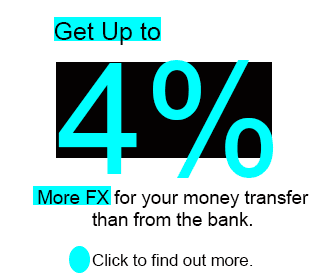Indian Rupee Nears 11-month Low, But Weakness Tipped to Fade
- Written by: Sam Coventry
-

Image © Pound Sterling Live, Still Courtesy of BBC
The Rupee is under pressure on early signs Prime Minister Narendra Modi's coalition bloc might not secure the majority markets were expecting. However, analysts say weakness will fade as policy continuity is to be expected.
With about 80% of votes counted, results show the incumbent BJP alliance leading with just approximately 289 seats in the 543-member parliament. The alliance won 350 seats in 2019.
The results suggest that Modi will need to strike new alliances in order to govern effectively.
The Pound to Rupee exchange rate rose as high as 106.90 - the highest level in 11 months - after initial results showed Modi’s Bharatiya Janata Party-led coalition may fall short of a majority.
The Rupee is currently two-thirds of a per cent higher against the Dollar at 83.62, while the Euro is a third of a per cent higher at 90.91.

The market had been expecting the landslide win predicted in exit polls, which offered the prospect of continuity of Modi's pro-growth economic agenda.
India is now headed for another coalition government where smaller regional parties will hold greater sway. It could mean Modi’s BJP may have to cede control of major ministries and compromise on policies and reforms
India's benchmark NSE Nifty 50 Index dropped as much as 8.5%, marking the biggest intraday fall in more than four years.
Despite the surprise result, analysts at Standard Charted look for policy continuity and say the Rupee's losses are likely to be shallow.
Economists at the bank hold a full-year 2025 GDP growth forecast of 7%, based on political and policy continuity amid normal monsoons. "The momentum, built by reforms and capex spend over the last decade, is likely to be sustained, in our view".
"USD-INR to stabilise around current levels in the near term; strong service exports, index flows, FX reserves to support INR," says Jonathan Koh, Economist and FX Analyst at Standard Chartered.






